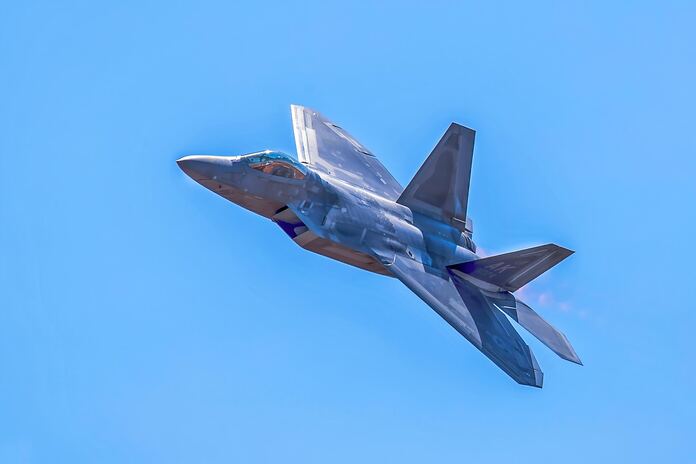Lockheed Martin Corp.’s (NYSE:LMT) Aeronautics business segment has recently been awarded a contract related to its F-35 fighter jet program by the Naval Air Systems Command in Patuxent River, Maryland. The contract, valued at $98 million, is anticipated to be completed by February 2026. Under the terms of this contract, Lockheed will provide development of production engineering change proposals, retrofit engineering release reports, investigations, and subcontractor support for investigations and qualifications aimed at extending the lifespan of F-35 aircraft parts.
A significant portion of the work associated with this contract will be conducted in Fort Worth, Texas, and it will serve the U.S. Air Force, Marine Corps, Navy, as well as non-Department of Defense participants.
The Importance of the F-35 Program for Lockheed Martin
Lockheed Martin holds a dominant position in the global military aircraft sector, primarily due to its F-35 fleet. The stealth capabilities and advanced features of the F-35 make it a highly sought-after choice for numerous nations. Lockheed Martin’s ongoing efforts to modernize and upgrade the aircraft using advanced technologies to meet contemporary warfare requirements have contributed to a substantial increase in demand.
The F-35 program remains the largest revenue generator for Lockheed Martin’s Aeronautics business unit and accounted for 66% of the segment’s net sales in 2022.
As of June 25, 2023, Lockheed has delivered 944 F-35 airplanes since the program’s inception, with 421 jets in the backlog. This, coupled with the recent contract win, is expected to enhance sales prospects for the segment.
Looking ahead, Lockheed Martin anticipates delivering 97 jets in 2023, exceeding the earlier projected delivery range of 147-153 for 2024. The delivery estimate for 2025 and beyond remains at 156 jets, which is expected to bolster the company’s revenue from the military aircraft sector.
Growth Prospects
Amid escalating geopolitical tensions worldwide, nations are accelerating their defense procurements to enhance their military capabilities. This heightened demand for fighter jets, a critical component of a country’s defense arsenal, presents significant opportunities.
According to projections by Mordor Intelligence, the global military aircraft market is expected to witness a compound annual growth rate (CAGR) of 7.37% during the period from 2023 to 2028. These projections indicate substantial opportunities for Lockheed Martin to benefit from the expansion of the military aircraft market, given its portfolio of combat-proven jets such as the F-16 and F-35 fighter aircraft.
Other prominent defense industry leaders engaged in the manufacturing of military aircraft, including Northrop Grumman, Airbus Group, and Textron, are also well-positioned to capitalize on the growth opportunities in the military aircraft market.
Northrop Grumman has a long history of pioneering the development of manned aircraft, offering a wide range of advanced aircraft solutions, from fighter jets and stealth bombers to surveillance and electronic warfare systems.
Airbus Group’s military aircraft portfolio includes a diverse range of aircraft, from the A400M and C295 tactical transporter to the A330 Multi Role Tanker Transport and the Eurofighter, a cutting-edge swing-role fighter.
Textron produces various military aircraft, including the Beechcraft T-6 training aircraft, Beechcraft AT-6 light-attack aircraft, Beechcraft Model 18 light bomber, T-44, T-34 training aircraft, and T-1A jet trainer. Textron’s subsidiary, Able Aerospace Services, provides component and maintenance, repair, and overhaul services for commercial and military fixed and rotor-wing aircraft.
Price Performance
Lockheed Martin’s stock has demonstrated resilience, with a 1.5% increase in value over the past 12 months, in contrast to a 5.6% decline in the broader industry.
Featured Image: Unsplas © John Torcasio









